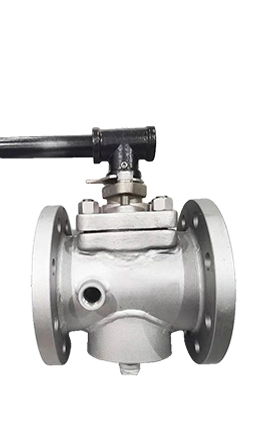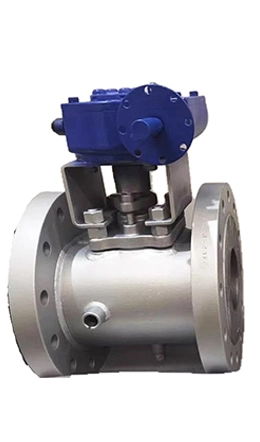A Jacketed plug valve is a type of valve designed with jackets meant to heat the media being transported to prevent it from crystallizing. These valves use high-temperature steam or oil on the valve body which is used to enhance the heat of the flowing media to keep it at the required state. Applications of Jacketed plug valve include food processing, coal tar processing, fertilizer manufacturing, and bitumen processing, and other highly viscous media among others. The advantages of using jacketed plug valves are versatile, fast operation, simple and compact design, easy installation and repair, high strength and zero leakage among others.


A Jacketed Plug Valve is a specialized type of plug valve designed to regulate fluid flow while maintaining precise temperature control of the process fluid.
1. Structure and Function
Core Design: Resembles a standard plug valve, featuring a cylindrical or conical plug with a flow passage. Rotating the plug aligns or blocks the flow ports to control fluid movement.
Jacket System: An external jacket surrounds the valve body, allowing a heating or cooling medium (e.g., steam, hot oil, glycol, or chilled water) to circulate. This jacket is typically integrated via welding, casting, or bolted connections and includes inlet/outlet ports for the thermal medium.
2. Purpose
Temperature Management:
Prevents fluid solidification (e.g., molten sulfur, heavy oils) or maintains viscosity by heating.
Avoids overheating or crystallization by cooling.
Ensures consistent flow properties and prevents thermal shock to the valve or piping system.
3. Applications
Chemical processing, oil and gas, pharmaceuticals, food and beverage, and other sectors requiring strict thermal control.
4. Advantages
Prevents Clogging: Maintains fluid state to ensure uninterrupted operation.
Enhanced Durability: Reduces thermal stress on valve components.
Versatility: Adaptable to heating or cooling needs based on the medium used.
5. Design Considerations
Materials:
Constructed from materials resistant to corrosion and thermal stress (e.g., stainless steel, carbon steel, alloys).
Sealing and Efficiency: Jacket must be leak-proof and designed for efficient heat transfer. Thermal expansion compatibility is critical.
Connection Types: Flanged, threaded, or welded connections for both process and jacket media.
1. Purpose of the Jacket:
Temperature Regulation: The jacket is an external shell surrounding the valve body, designed to circulate a heating or cooling medium (e.g., steam, hot oil, glycol, or chilled water).
Prevent Solidification: Maintains fluidity of viscous or heat-sensitive materials (e.g., asphalt, molten sulfur, chocolate) by preventing cooling-induced solidification.
Process Stability: Ensures optimal temperature for chemical reactions, food safety, or pharmaceutical integrity, avoiding degradation or crystallization.
2. Operational Principles:
Thermal Medium Circulation: The jacket has inlet/outlet ports to circulate the thermal fluid, ensuring uniform heat transfer to the valve body and process fluid.
Material Compatibility: Constructed from materials (e.g., stainless steel) resistant to both the process fluid and thermal medium to avoid corrosion or contamination.
Sealing and Expansion: Tapered plug designs accommodate thermal expansion, maintaining sealing integrity despite temperature fluctuations.
3. Advantages:
Reliability: Combines flow control with thermal management, reducing clogging risks.
Versatility: Adaptable to heating or cooling needs across industries.
Efficiency: Minimizes downtime caused by material buildup or temperature-related failures.
